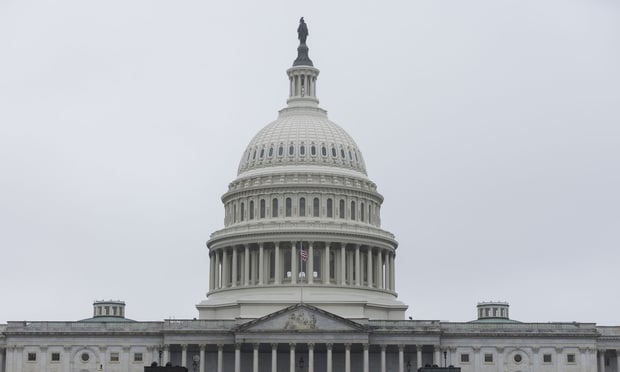It’s fall and if you’re a benefits leader, you are probably gearing up for open enrollment and finalizing any new vendor implementations. Now is also the time when most self-insured plan sponsors need to obtain or renew a stop-loss insurance policy, a policy placed on a self-insured medical plan that reimburses the plan sponsor for claims exceeding specified levels.
While straightforward on the surface, getting the details right in your stop-loss coverage can save or cost you millions. There are two primary forms of stop-loss policies:
-
Specific Stop Loss reimburses the plan sponsor for individual claims that exceed a specific level called the Attachment Point or Deductible during the policy period. For example, a policy with a $250,000 Attachment Point would essentially cap an employer’s cost for each member at $250,000 in a year.
-
Aggregate Stop Loss reimburses the plan sponsor if total claims in the plan exceed a specified level in a year. This level is usually expressed as a percentage of expected plan costs (e.g. 125 percent). As an example, a plan that is expected to have claims totaling $10M in a year with 125 percent aggregate stop-loss would be reimbursed for claims above $12.5M in the year. These policies typically have a maximum reimbursement level ($1M is common).
Here is a quick check-list to review when looking at your stop-loss renewal.
-
Have you started the process yet? If the stop-loss renewal is left to year-end, you’ll have fewer options and a greater chance of ending up with a gap in coverage. Some good initial steps are to review your loss experience, review the renewal, and check your policy against the issues listed below.
-
Do you have any eligibility gaps in your policy? These are more common than you would think. We often see an underlying medical policy that provides coverage for individuals excluded from the stop-loss policy. Common misses are COBRA enrollees, retirees, domestic partners, and inactive employees on leave or disability.
-
Do you have any benefit gaps? These would include anything covered by your medical policy, but not included in stop-loss. The most significant area to check is pharmacy benefits. Other areas to check include: behavioral health, surgical centers of excellence paid through a TPA, and claims approved outside of the plan terms (e.g. experimental procedures).
-
Does your stop-loss policy have an annual maximum? Before the Accountable Care Act (ACA), lifetime maximums on employee benefit plans were common (often set at $1M or $2M), so stop-loss policies could have an identical maximum without risk to the plan sponsor. Since ACA prohibits lifetime maximums on benefit payments, employers are taking on significant risk if their stop-loss policy has a maximum. I’ve seen claims exceed $5M for an individual in a single year.
| Employer Size | Average Stop-Loss Deductible |
| 200-999 Employees | $150,000 |
| 1,000 – 4,999 Employees | $290,000 |
| 5,000 + Employees | $480,000 |
Source: 2017 Kaiser Family Foundation Survey
-
If you have multiple vendors, is consolidated data at the member-level being provided to the stop-loss carrier? If not, it’s possible that you aren’t getting all claims counted towards the deductible and reimbursed. Sometimes an employer will be paying to have both medical and pharmacy included in stop-loss, but not have the data submitted to actually cover the losses in full.
-
Has it been years since you adjusted your specific deductible? Stop-loss deductibles need to be adjusted every few years to prevent a greater and greater proportion of medical claims exceeding the deductible and becoming stop-loss claims. The level should also be reviewed if you have a significant change in number of employees, mix of insured and self-insured plans, or tolerance for financial risk. Ultimately, the stop-loss deductible needs to be based on each organization’s unique circumstances, but the national benchmarks below are a good reference point.
-
Do you have aggregate stop-loss? Should you? While Aggregate Stop-Loss provides important protection for smaller self-insured plans, its value can be questionable for most employers above 1,000 employees (and even many smaller plans). A typical aggregate policy begins paying out at 125% of expected costs and the total payout is limited to $1M. Consider a plan with 1,000 employees that has expected claims of $10M/year. An aggregate policy for this employer wouldn’t provide any payment unless the plan costs exceed $12.5M ($2.5M over budget) and then would only cover the next $1M.
-
Have you considered an aggregating specific deductible? While it seems complex on the surface, an aggregating specific deductible is simply a way to reduce premium levels without losing protection against significant high claims. Here’s how it works:
Recommended For You
Consider a plan with a $100,000 specific deductible. This plan normally covers the amount of all claims that exceed $100,000 no matter how many claims or the total value that exceeds $100,000. With aggregating specific, the policy doesn’t pay until a total number of dollars is spent in individual claims over $100,000 - - which is what you are trying to protect against. Incorporating an aggregating specific deductible into your policy can provide a “breakeven” result in years with significant large claims and an opportunity for significant savings in years with fewer large claims.
-
Have you recently conducted a competitive bidding for stop-loss coverage? Premiums can frequently vary by 20-50% in a competitive bidding process. For most employers, we recommend a detailed review annually and a competitive bidding process every 3 years. In your competitive bidding analysis, don’t forget about fees that your other vendors will charge to interface with your stop-loss carrier.
-
Do you know how much compensation your broker or consultant receives for placing this policy? Are you getting value?
Bottom line, there are millions of dollars at stake around getting the appropriate stop-loss protection in place. The reason you buy stop-loss is to protect against unlikely but costly events. Make sure your policy doesn’t leave you with unprotected gaps.
© Touchpoint Markets, All Rights Reserved. Request academic re-use from www.copyright.com. All other uses, submit a request to [email protected]. For more inforrmation visit Asset & Logo Licensing.






